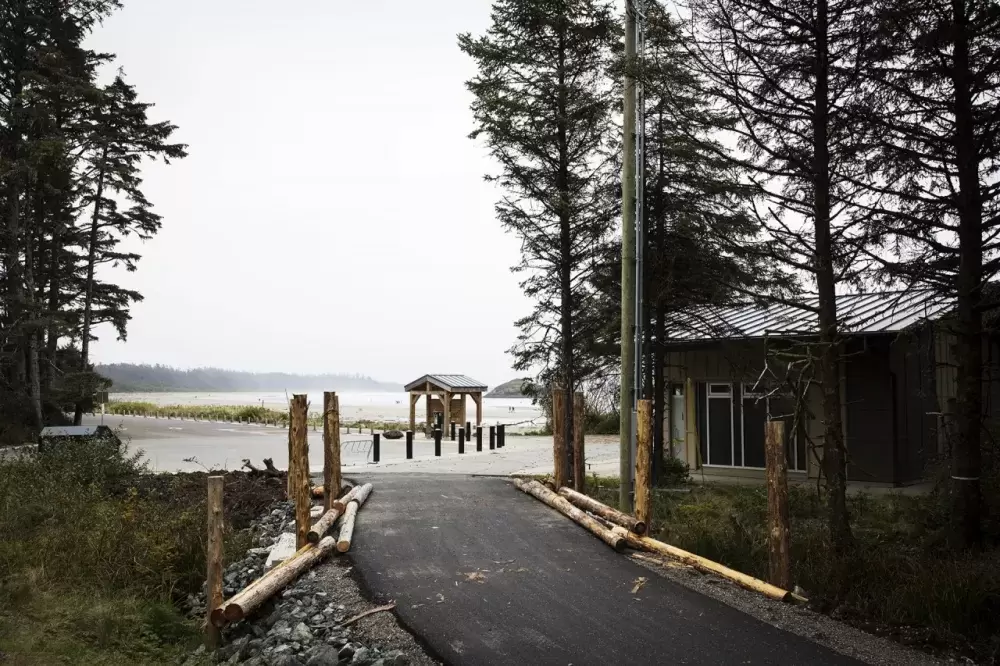Parks Canada is making progress building ʔapsčiik t̓ašii (pronounced ups-cheek ta-shee), the multi-use pathway that extends between Tofino and Ucluelet.
With most of the pathway now paved, Parks Canada is moving forward by installing rest areas, safety signage, line painting and designing cultural elements in collaboration with the Elders Working Group.
Consisting of three elders from both Tla-o-qui-aht First Nation and Yuułuʔiłʔatḥ, the Elders Working Group is assisting Parks Canada to develop “the visitor experience plan” for Nuu-chah-nulth cultural interpretation along the pathway.
While the process is evolving, Parks Canada said that the Elders Working Group has emphasized a desire to see to their territory and Nuu-chah-nulth principles acknowledged.
Trilingual signage and text panels will feature these histories, along with place names, where English and French will follow Nuu-chah-nulth.
Levi Martin, one of the Tla-o-qui-aht representatives involved with the working group, helped name the trail, which means “going the right direction on the path.”
It was an obvious choice for Martin, who feels encouraged by Parks Canada’s willingness to collaborate with First Nations.
“[Parks Canada] wanted to make sure that things were done in a good way to make sure that we didn’t do any harm to the land or to nature,” said Martin. “We’re starting to work together and once we start to work together, then we’re going the right way.”
Completion for the $51.1 million project remains on target for March 2022.
“While work is progressing well and on schedule, a completion date of 2022 allows Parks Canada to accommodate for the unique conditions and requirements of undertaking the ʔapsčiik t̓ašii building in this location in the national park reserve,” said a Parks Canada spokesperson. “This includes environmental protection, such as respecting the nesting period for migratory birds, minimizing disruption to visitors, where possible, and working with the challenges presented by wet conditions common in this coastal region. Additionally, this will allow time for Parks Canada to work with local First Nations groups within the national park reserve to identify and act on potential short- and long-term economic benefits.”
More trees will be felled to support the project on Nov. 3, on the west side of Highway 4, north of Green Point Campground.
To pay their respects, Martin will be performing a chant and providing an offering, “calling on the ancestors to be with us and to make sure that things get done right and with honour.”
By honouring the fallen trees, Martin said that it will ensure the “spirit of the tree goes into the ground and will always come back.”
Editor's note: An earlier version of this story stated that the Elders Working Group consists of members from both Tla-o-qui-aht First Nation and Yuułuʔiłʔatḥ. It has since been clarified that the working group now has three elders from each of these First Nations.







